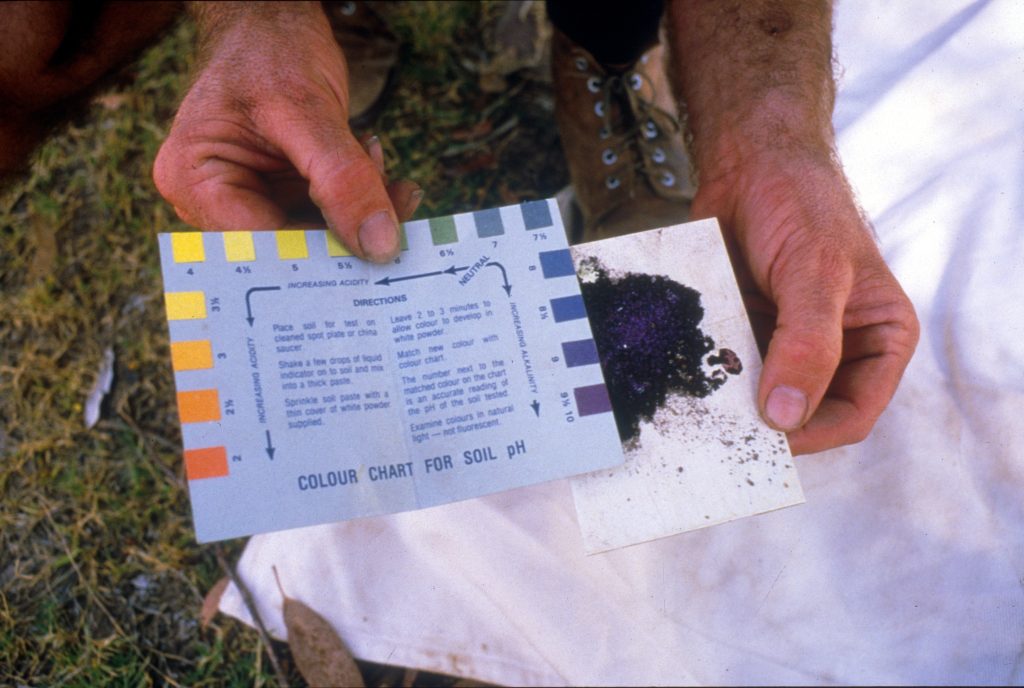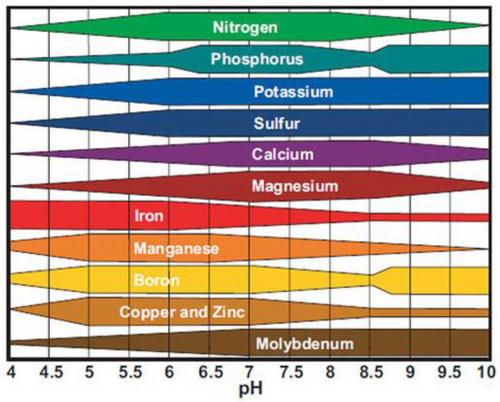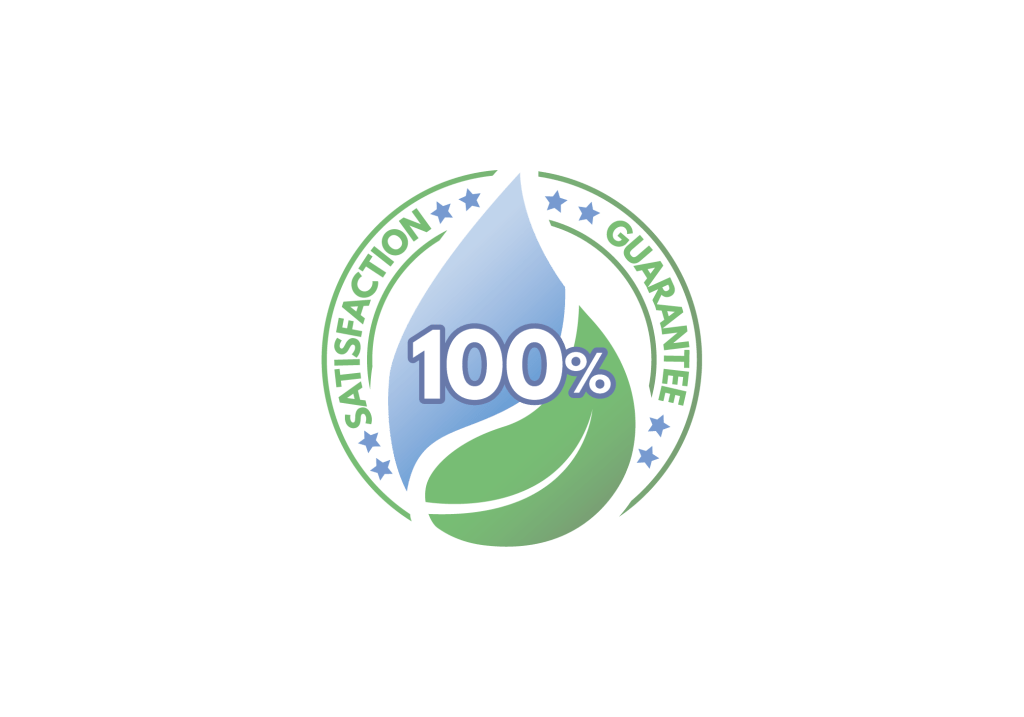Healthy soil is the foundation for a healthy lawn or garden. Simply put, if the soil is fertile and healthy, whatever you plant in it has a better chance of growing healthy, too.
Testing the soil at least annually is like running a blood panel at your yearly physical. It helps to give you a snapshot of the soil’s health and tells you when it needs to make it sustainable for plant growth.

Why is Soil Testing Important?
Soil testing is a fantastic tool because it gives you valuable information you can’t get other ways. When you know the basics about the soil, including pH and fertility, you can use the info to make management decisions. Instead of haphazardly applying fertilizer, you can apply exactly what your grass needs.
A soil test is important because:
✅It helps to avoid excessive fertilizer use
✅It ensures environmentally friendly lawn care & landscaping practices
✅It helps evaluate the suitability of soil for certain plants
✅It aids with restoring soil fertility, which is a critical factor in ensuring sustainability
You ultimately make wise financial and environmental decisions, get the most bang for your buck, and have a beautiful lawn to show for it.
What Time of Year Should You Do Soil Testing?
Realistically, you can go outside and collect soil samples whenever the ground isn’t frozen solid. That being said, the best time for sampling is in early fall before you start getting your grass and yard ready for the upcoming winter. The soil testing results will help you determine how much fall fertilizer to apply and whether or not you need to adjust the soil pH with lime.
Taking a Proper Soil Sample
It’s important to remember one key thing when taking a soil sample: soil testing results are only as good as the sample analyzed. When a half-pound of soil represents tons of soil in your yard or garden, that small sample must represent the whole space.
The following are general sampling guidelines; if you’re sending the sample to a lab, check with them to see if they have sampling instructions.
- Randomly collect 10 to 20 soil samples from across the lawn or garden using a trowel or soil probe, putting the soil in a clean bucket. Sample 4” deep for lawns and 6” down for gardens and flower beds.

- Once you collect the cores, remove any plant residue and debris. Mix the soil well.
- Spread soil in a thin layer across newspaper or cardboard, breaking up any large clods or clumps, and let it dry at room temperature for up to 48 hours.
- After airdrying, take about two cups of the soil for sampling.
Tips for Taking Soil Samples
- Clean all of the equipment before and after taking samples.
- Sample when the soil is moist but not soggy.
- Walk through your lawn or garden, randomly taking samples in a zig-zag or “M” pattern.
- Do not sample spots different from the rest of the lawn, including spots that always stay wet.
Common Soil Tests & Their Importance
You can run a long list of tests on your soil sample, but it isn’t necessary to test for everything under the sun. To get a feel for your soil’s fertility, have it analyzed for soil pH, organic matter (OM), nitrogen (N), phosphorus (P), potassium (K), calcium (Ca), magnesium (Mg), sodium (Na) and cation exchange capacity (CEC). The results of these tests will give you the bulk of the information needed for wise management decisions.
Soil pH
Soil pH is important because as it moves too far from neutral, nutrient availability is impacted, causing deficiencies or toxicities.
- At the high and low pH scale ranges, nutrients like nitrogen, phosphorus, potassium, calcium, magnesium, and sulfur that grass requires for growth become tied up and unavailable for plant absorption.
- As the soil pH moves away from neutral, nutrients needed in small amounts like chlorine, iron, boron, manganese, zinc, copper, molybdenum, and nickel become more available and can potentially become toxic.
- Below a soil pH of 5.0, aluminum becomes very soluble and dangerously toxic to plants.
Ideally, you want your pH between 6.0 and 7.0, which is considered slightly acidic, for optimal nutrient availability and a healthy lawn. Cool-season turfs like Kentucky bluegrass and perennial ryegrass, typically grown in Rhode Island, tend to like the pH more in the upper end of that range.
When your soil is too far from this desired range, you waste your money putting fertilizer down. Your grass can’t access the nitrogen, phosphorus, and potassium you add. Quickly after applying it, it gets tied up and can’t be used by the lawn.
Soil Organic Matter
Organic matter is an integral part of healthy soil because it holds onto nutrients so they don’t leach out of the root zone. It keeps water in the soil, helps to resist soil pH changes, and releases nutrients as it breaks down.
Ideally, you want your soil to have between five and eight percent organic matter. If it drops too low, the soil may not be able to adequately retain water or hold onto the nutrients needed to support a lush, green lawn.
Plant Essential Nutrients—Nitrogen, Phosphorus, Potassium, Calcium, Magnesium, and Sodium
Nitrogen (N), phosphorus (P), and potassium (K) are the three most well-known nutrients needed by your lawn. We’re most familiar with them because they are required in the highest amounts and are the numbers commonly listed on fertilizer packages.
Calcium, magnesium, and sodium are also important to test for. They’re needed in smaller amounts but still essential for plant growth.
- Nitrogen regulates vegetative growth, keeps the grass green by aiding in chlorophyll production, and helps build amino acids. It also completes many enzymatic reactions.
- Phosphorus is an essential part of DNA and RNA, which hold genetic information within the cells. It also plays a vital role in respiration and internal energy transport.
- Potassium isn’t a structural component but has a more indirect role. It helps regulate photosynthesis rates by opening and closing stomata and activates enzymatic reactions necessary for overall plant health and growth.
- Calcium helps make up pectin, which forms and keeps cell walls intact.
- Magnesium is a primary structural molecule in chlorophyll, making it essential in photosynthesis.
- Sodium helps regular osmotic pressure and controls membrane electrical potential, maintaining plant turgor.
The ideal nutrient concentrations vary within soils depending on the soil texture and the testing method used by the lab doing the analysis.
When you receive soil test results, the lab typically indicates if your values are low, adequate, or too high. The lab may also recommend fertilizer rates for good plant growth in the case of low values.
Cation Exchange Capacity (CEC)
A soil’s cation exchange capacity, or CEC, estimates the quantity of cations (positively charged nutrient ions) a soil can hold onto. So, understanding your soil’s CEC helps gauge how well nutrients attach to the soil particles.
Soil with a higher CEC value is desirable because it will prevent essential nutrients from leaching out of the root zone.
855-RILAWNS is Here to Help
Soil testing is an integral part of managing your lawn and garden, but it isn’t something you have to handle alone. With our soil test services, we will:
✅Take a sample and email you the results.
✅Recommend corrective applications to ensure your soil is as healthy as possible.
✅Schedule applications in accordance with recommendations.
Contact us here for a quote, connect with us through our Facebook page, or schedule a date and time for your soil testing. Our lawn care professionals provide top-quality services and take pride in keeping your yard looking its best!
The service area of our skilled RI Landscapers includes South Kingstown, Narragansett, Charlestown, Exeter, North Kingstown, Warwick, West Warwick, Jamestown, Richmond, Providence, East Providence, South Kingstown, and East Greenwich.


